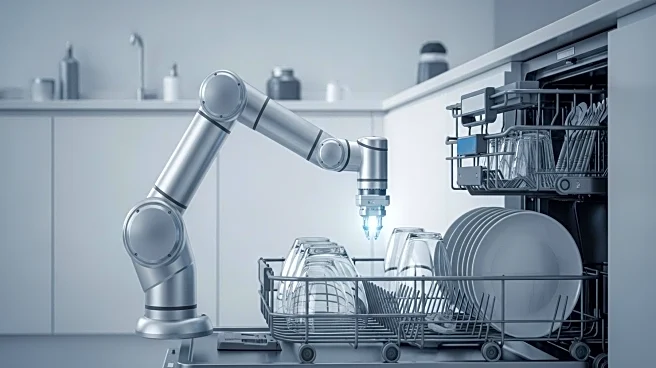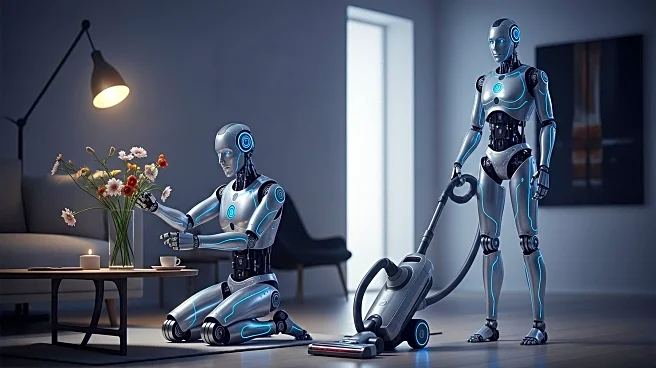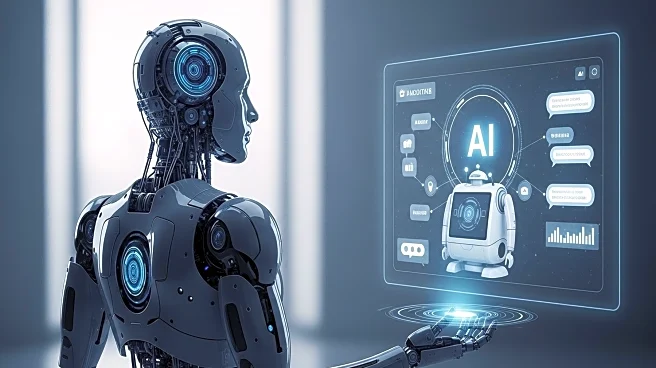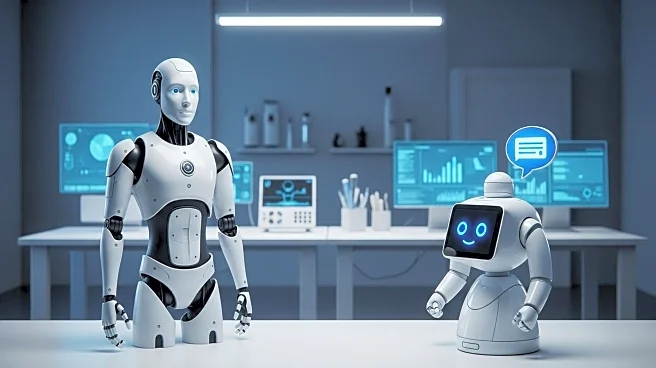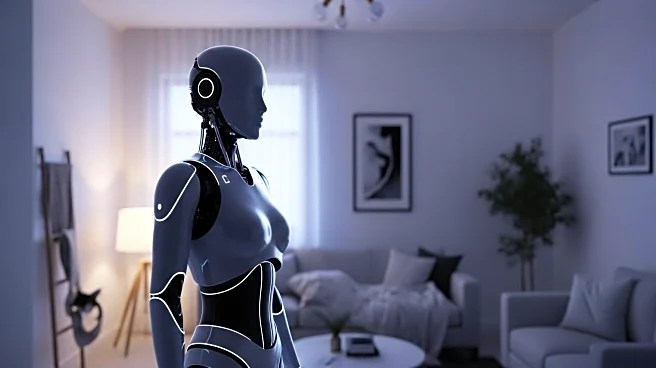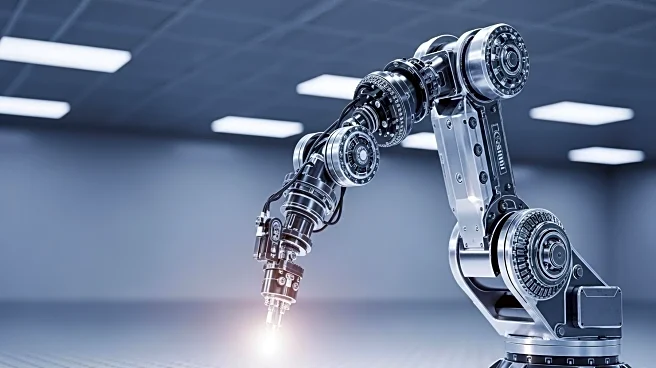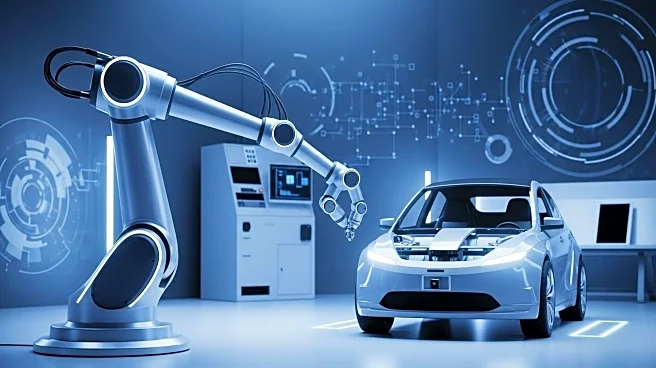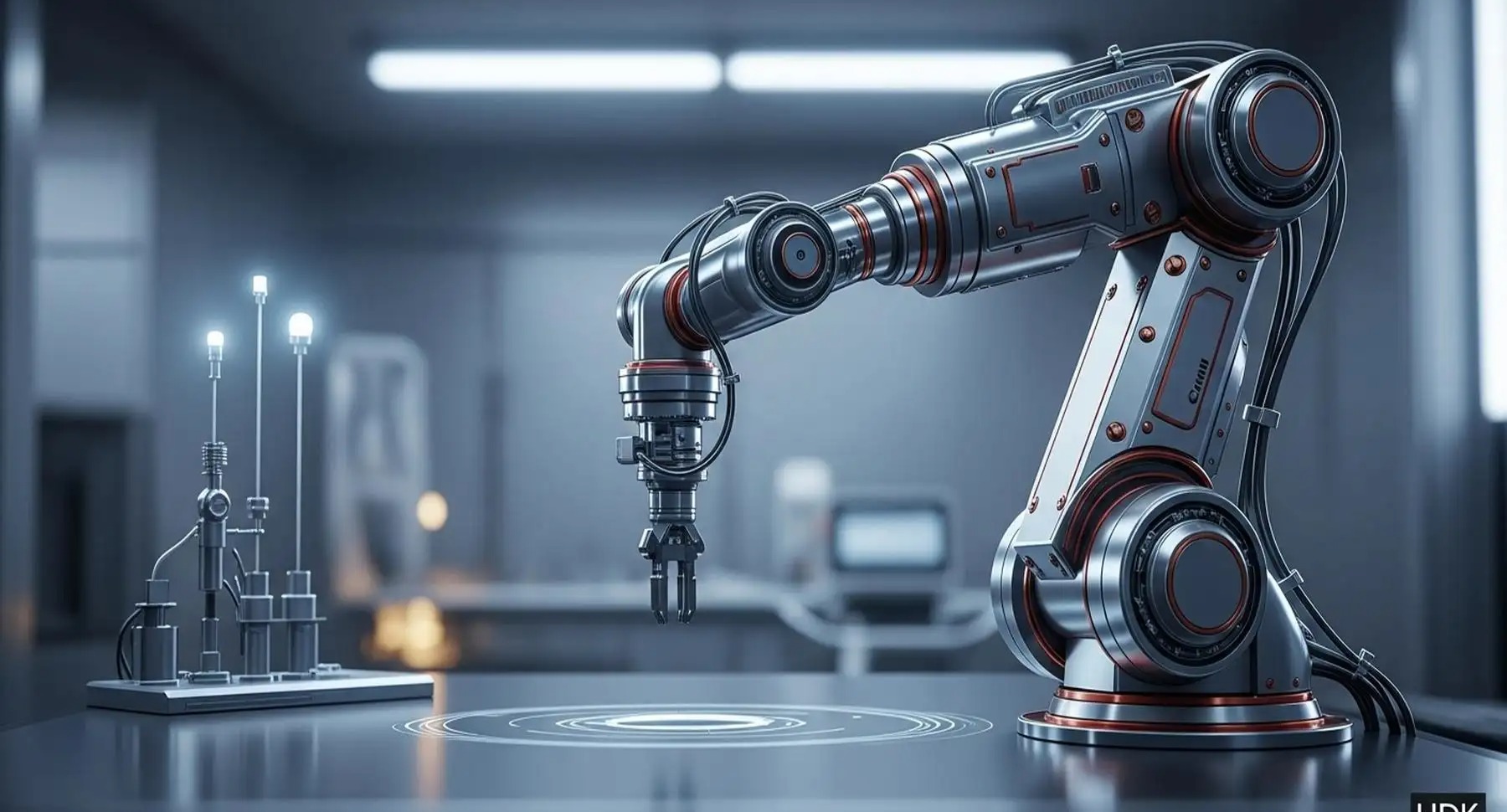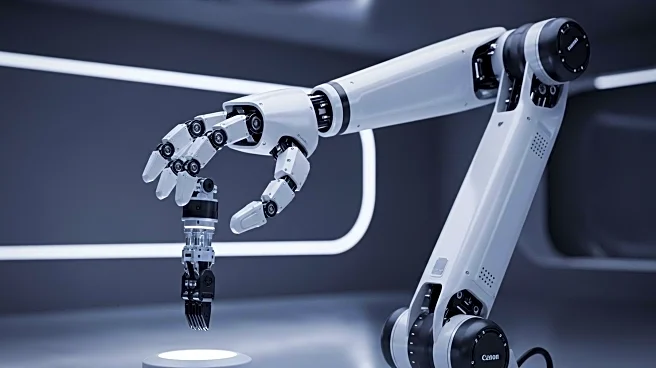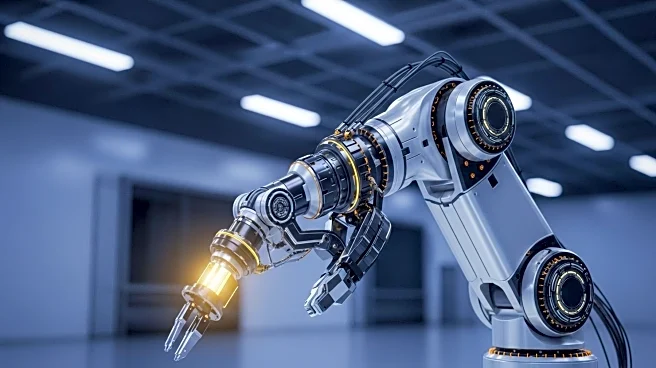What's Happening?
Figure AI has developed a humanoid robot named Helix, which is now capable of loading dishwashers, following its previous tasks of folding laundry and sorting packages. The robot uses a Vision Language Action (VLA) model to adapt to various real-world challenges by learning from new data. This capability involves handling dishes with precision, adapting to different configurations, and recovering from errors. The robot's ability to perform these tasks without new algorithms or special-case engineering demonstrates its versatility and potential for broader applications.
Why It's Important?
The advancement of Helix represents a significant step in the development of scalable humanoid intelligence. By learning new tasks through data rather than specific programming, Helix showcases the potential for robots to perform a wide range of household chores, which could revolutionize domestic life and reduce human labor in mundane tasks. This technology could lead to increased efficiency in homes and businesses, impacting industries such as logistics and hospitality. The ability to automate complex tasks may also drive innovation in robotics and AI, leading to more sophisticated and adaptable systems.
